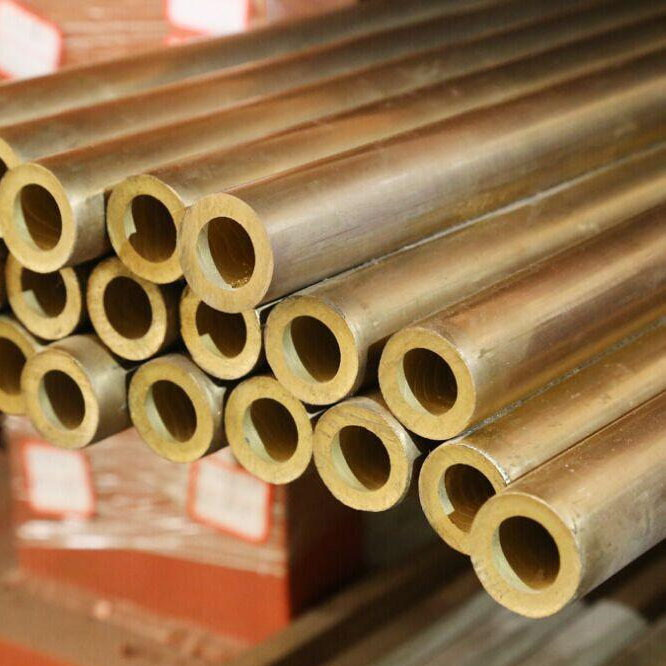Brass Series
Brass is an alloy of copper and zine, in proportions which can be varied to achieve varying mechanical, electrical, and chemical properties. It is a substitutional alloy: atoms of the two constituents may replace each other within the same crystal structure.
Email: info@cjmetals.com.cn
Tel: 0086-021-57629806

| Grade list of copper and copper alloys by country | |||||||
| Classification | China | Germany | America | Japan | England | Europe | International |
| oxygen free copper | TU1 | 2.0076 | C10200 | C1020R | C103 | ||
| TU2 | Cu-OF-H110 | C11000 | c1011 | C101 | |||
| Vacuum oxygen free copper | E-Cu58 | TU00 | c1020 | 6N | |||
| high purity | copper-OFE | c10500 | c10700 | ||||
| Silver copper | TAg 0.1 | CuAg 0.1 | C10400 | C1040 | CuAg 0.1 | ||
| brass | H90 | CuZn10 | C22000 | C2200 | CZ101 | CuZn10 | CW501L |
| H70 | CuZn30 | C26000 | C2600 | CZ106 | CuZn30 | CW505L | |
| H68 | C26200 | C2620 | CuZn33 | CW506L | |||
| H65 | CuZn35 | C27000 | C2700 | CZ107 | CuZn36 | CW507L | |
| H63 | CuZn37 | C27200 | C2720 | CZ108 | CuZn37 | CW508L | |
| H62 | CuZn40 | C28000 | C2800 | CZ109 | CW509L | ||
| bronze | QSn4-0.3 | CuSn4 | C51100 | C5111 | PB101 | CuSn4 | CW450K |
| CuSn5 | C51000 | C5101 | CuSn5 | CW451K | |||
| QSn6.5-0.1 | CuSn6 | C51900 | C5191 | PB103 | CuSn6 | CW452K | |
| QSn8-0.3 | CuSn8 | C52100 | C5210 | CuSn8 | CW453K | ||
| QSn6.5-0.4 | |||||||
| copper-nickel | BZn18-18 | CuNi18Zn20 | C75200 | C7521 | NS106 | CuNi18Zn20 | |
| BZn18-26 | CuNi18Zn27 | C77000 | C7701 | NS107 | CuNi18Zn27 | CW410J | |
| BZn15-20 | C7541 | CW409J | |||||
| BZn18-10 | C7350 | ||||||
| pure copper | TU2 | OF-Cu58 | C10100 | C1011 | C101 | CW008A | copper oxide |
| T2 | SW——copper | C11000 | C1100 | C101 | copper - FRHC | ||
| TP2 | SF-Cu | C12200 | C1220 | C106 | CW024A | copper - DHP | |
| TP1 | SW-copper | C12000 | C1201 | CW023A | copper DLP | ||
1. Brass has long been a popular material for decoration due to its bright, gold-like appearance; being used for drawer pulls and doorknobs. It has also been widely used to make utensils due to properties such as having a low melting point, high workability (both with hand tools and with modern turning and milling machines), durability, and electrical and thermal conductivity.
2. such as horns and bells, and also used as a substitute for copper in making costume jewelry, fashion jewelry, and other imitation jewelry. The composition of brass, generally 66% copper and 34% zinc, makes it a favorable substitute for copper based jewelry, as it exhibits greater resistance to corrosion. Brass is often used in situations in which it is important that sparks not be struck, such as in fittings and tools used near flammable or explosive materials.
Brass is more malleable than bronze or zinc. The relatively low melting point of brass (900 to 940 °C, 1,650 to 1,720 °F, depending on composition) and its flow characteristics make it a relatively easy material to cast. By varying the proportions of copper and zinc, the properties of the brass can be changed, allowing hard and soft brasses. The density of brass is 8.4 to 8.73 g/cm3 (0.303 to 0.315 lb/cu in).
Today, almost 90% of all brass alloys are recycled.Because brass is not ferromagnetic, it can be separated from ferrous scrap by passing the scrap near a powerful magnet. Brass scrap is collected and transported to the foundry, where it is melted and recast into billets. Billets are heated and extruded into the desired form and size. The general softness of brass means that it can often be machined without the use of cutting fluid, though there are exceptions to this.








